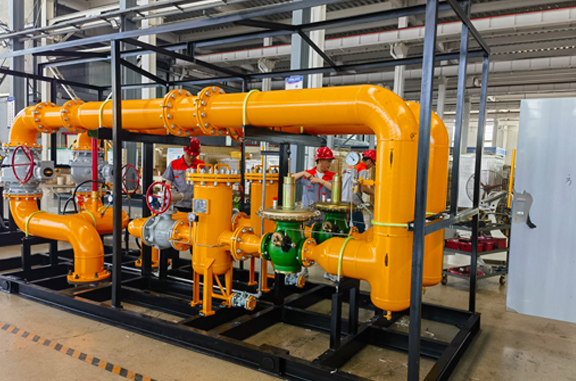
Jul . 20, 2024 11:14
Back to list
Pressure Reduction Station for Efficient Gas Distribution and Safety Management Techniques in Industrial Applications
Pressure Reduction Stations Ensuring Safe and Efficient Gas Distribution
In the realm of natural gas distribution, pressure reduction stations play a critical role in safeguarding infrastructure and ensuring the delivered gas is at appropriate pressure levels for residential and commercial use. These stations are essential components of the pipeline system, responsible for controlling the pressure of gas as it moves from high-pressure transmission lines to lower-pressure distribution systems. This article will explore the function, importance, and operational aspects of pressure reduction stations.
The Function of Pressure Reduction Stations
Pressure reduction stations, often referred to as PRS, are strategically located along gas pipelines. Their primary function is to reduce the high pressure of natural gas—often exceeding 1,000 psi—down to safer levels, typically around 10 to 60 psi, that are suitable for household usage. This pressure reduction is achieved through a combination of mechanical and equipment methodologies, including pressure regulators, control valves, and safety devices.
The process begins when high-pressure gas enters the station. The first line of defense is typically a safety valve that ensures the pressure does not exceed a certain threshold. Following this, pressure regulators gradually lower the gas pressure to the desired level. These sophisticated devices are equipped with accurate control mechanisms that can adjust to fluctuations in flow and pressure, thereby ensuring that the gas supplied to consumers remains consistent and safe.
.
The significance of pressure reduction stations cannot be overstated. Firstly, they enhance safety by preventing gas leaks and explosions that could occur if high-pressure gas were allowed to enter residential and commercial systems. By maintaining gas at lower pressure levels, they reduce the risk of accidents and enhance the overall safety of the gas supply network.
محطة تخفيض الضغط

Secondly, pressure reduction stations are vital for regulatory compliance. Gas distribution is governed by strict safety standards and regulations. PRS help operators adhere to these regulations by ensuring that the gas delivered to consumers meets safety and quality criteria.
Additionally, these stations also enhance the efficiency of the gas distribution system. By controlling pressure fluctuations, they ensure an uninterrupted and steady supply of gas, which is essential for heating, cooking, and powering various appliances in homes and businesses. This operational stability is crucial for maintaining consumer confidence in the gas supply system.
Operational Challenges and Maintenance
While pressure reduction stations are designed to be robust and reliable, they are not without their challenges. Regular maintenance is essential to ensure that all equipment functions correctly. This includes inspecting pressure regulators, safety valves, and control systems for signs of wear and tear or malfunction. Any failure in these components can lead to significant operational issues, including overpressure situations or insufficient gas delivery.
Moreover, as the demand for natural gas continues to grow, especially with the shift towards cleaner energy sources, pressure reduction stations may also face increased pressure to perform efficiently. Operators must routinely assess capacity needs and potentially upgrade equipment to accommodate growth in demand.
Conclusion
In summary, pressure reduction stations are pivotal in the natural gas distribution network. They ensure the safe and efficient delivery of gas to consumers by managing high-pressure gas from pipelines, reducing it to suitable levels, and maintaining overall system integrity. With ongoing advancements in technology and infrastructure, PRS will continue to evolve, further enhancing safety and efficiency in gas distribution. Recognizing their importance not only underscores the complexity of gas distribution systems but also highlights the commitment to providing safe energy solutions to communities.
Latest news
-
Safety Valve Spring-Loaded Design Overpressure ProtectionNewsJul.25,2025
-
Precision Voltage Regulator AC5 Accuracy Grade PerformanceNewsJul.25,2025
-
Natural Gas Pressure Regulating Skid Industrial Pipeline ApplicationsNewsJul.25,2025
-
Natural Gas Filter Stainless Steel Mesh Element DesignNewsJul.25,2025
-
Gas Pressure Regulator Valve Direct-Acting Spring-Loaded DesignNewsJul.25,2025
-
Decompression Equipment Multi-Stage Heat Exchange System DesignNewsJul.25,2025

